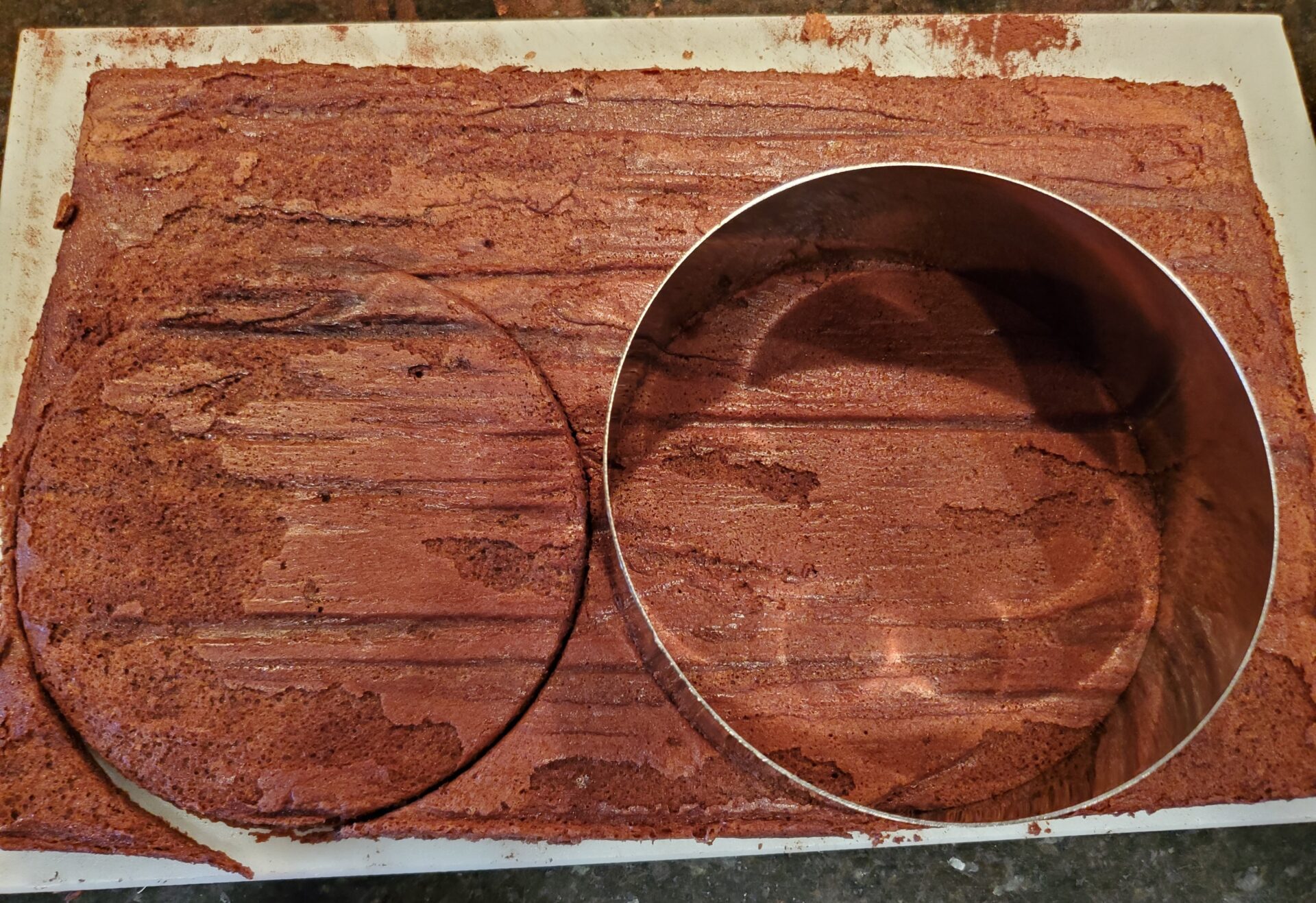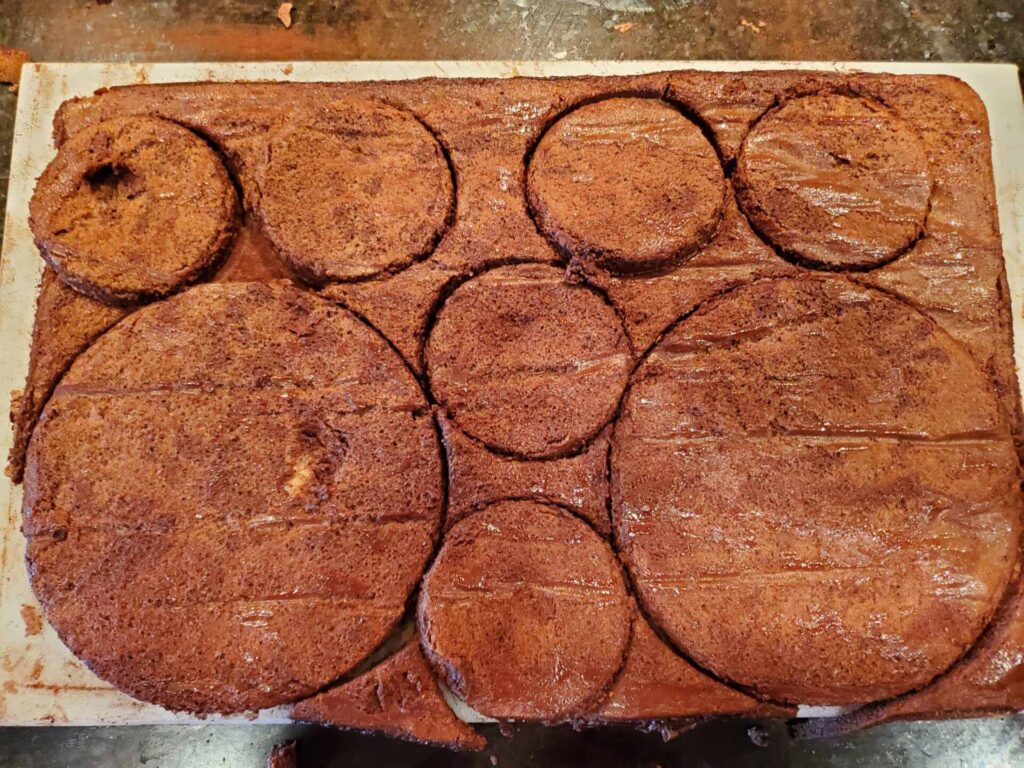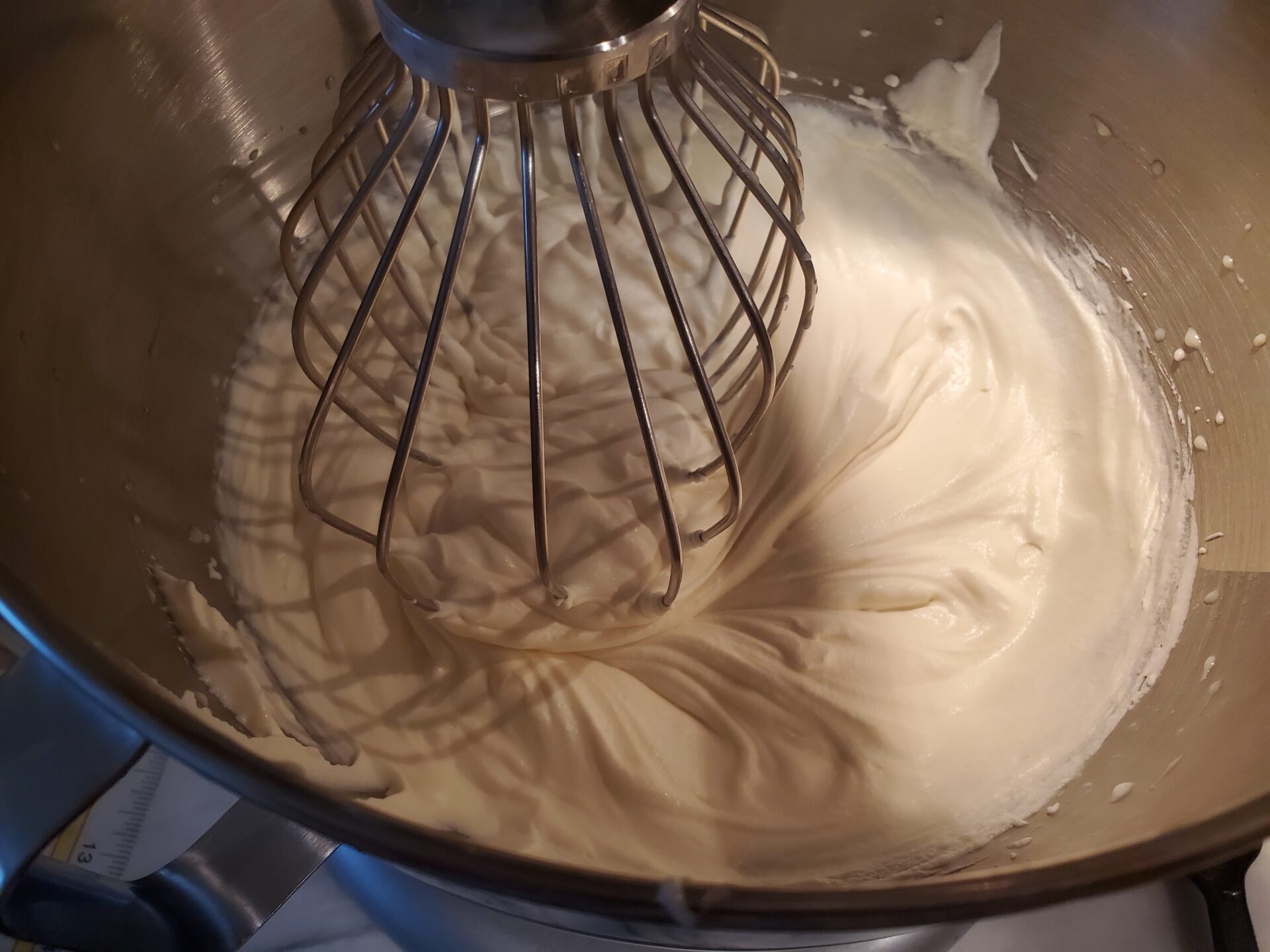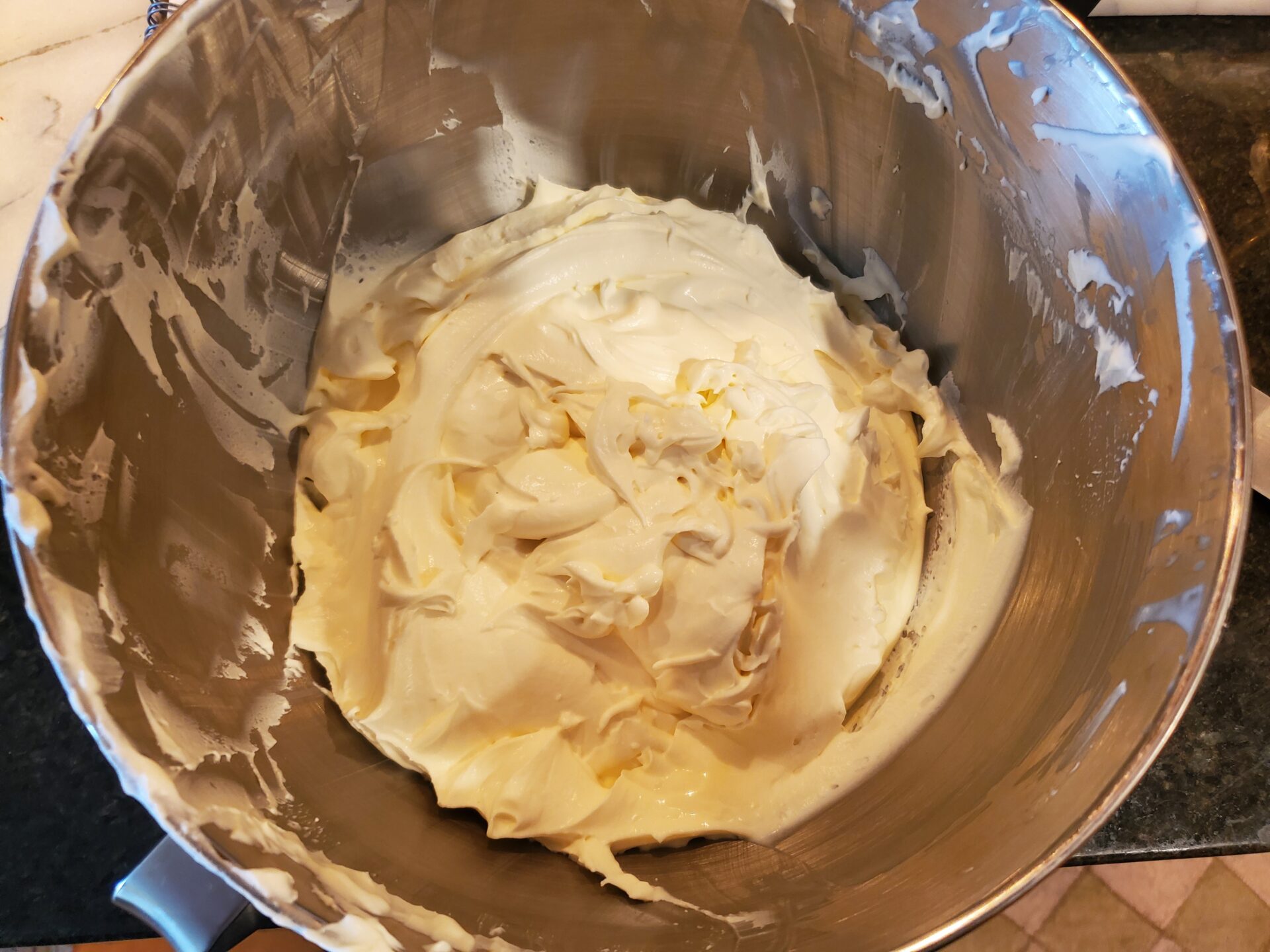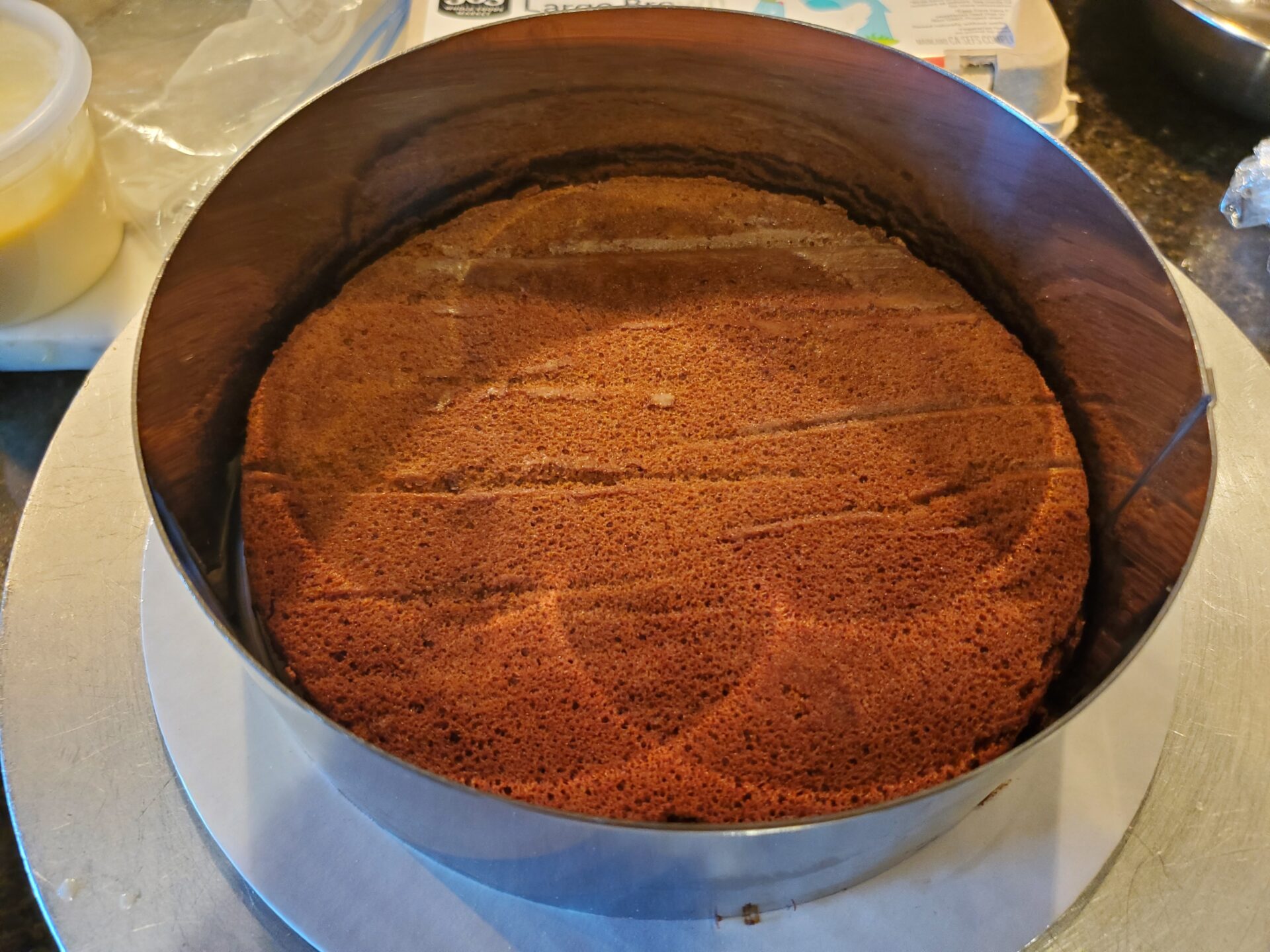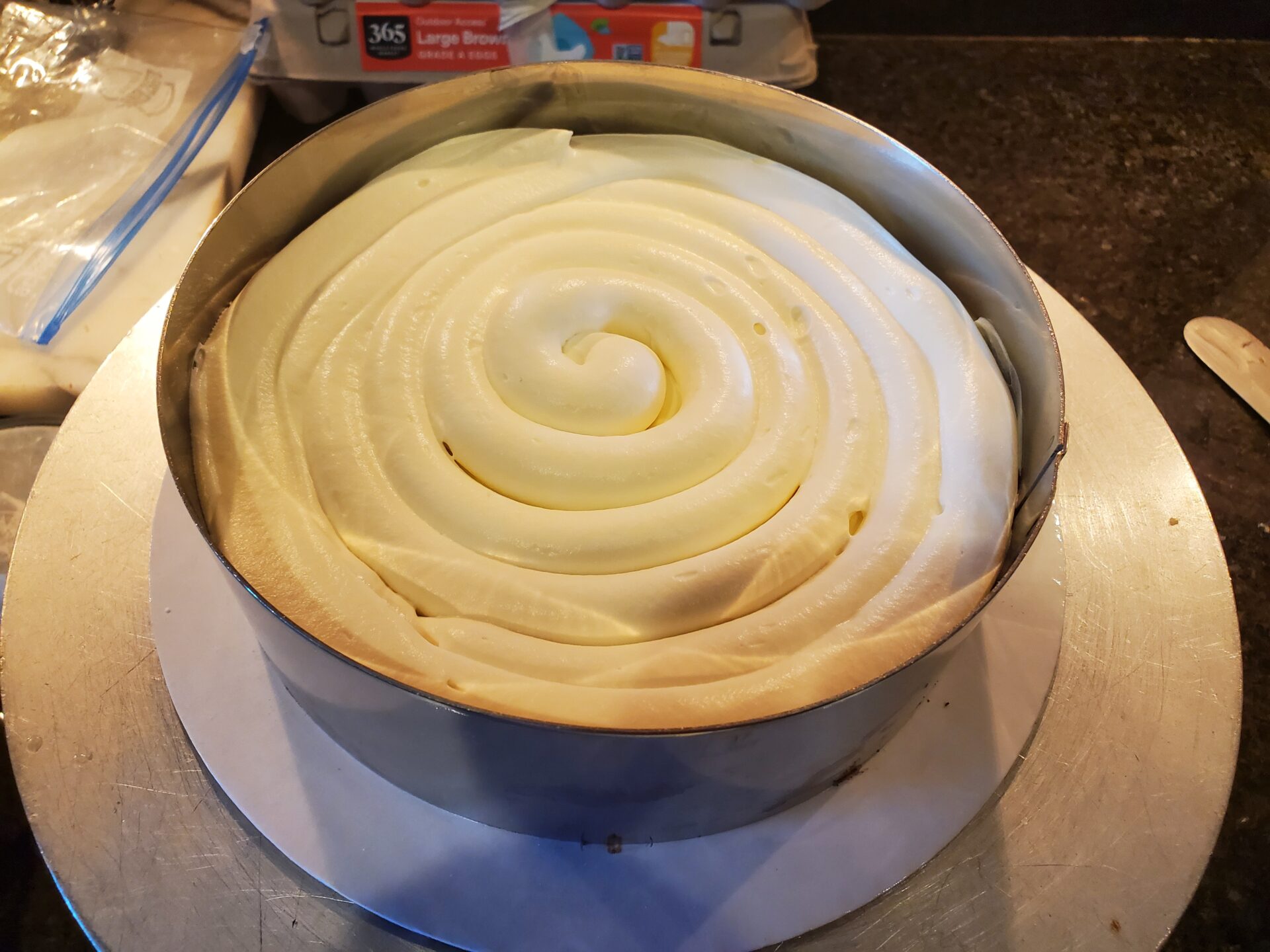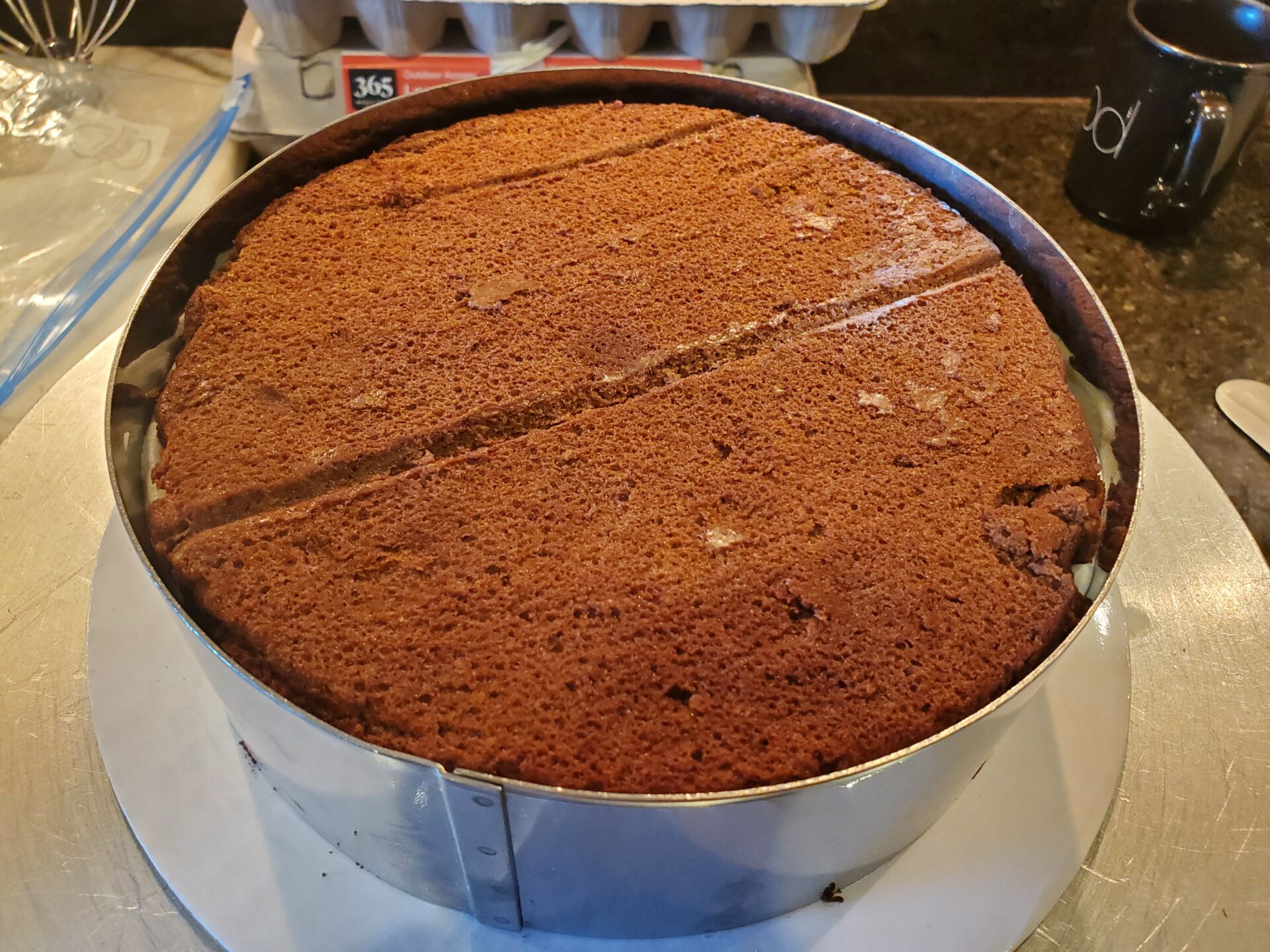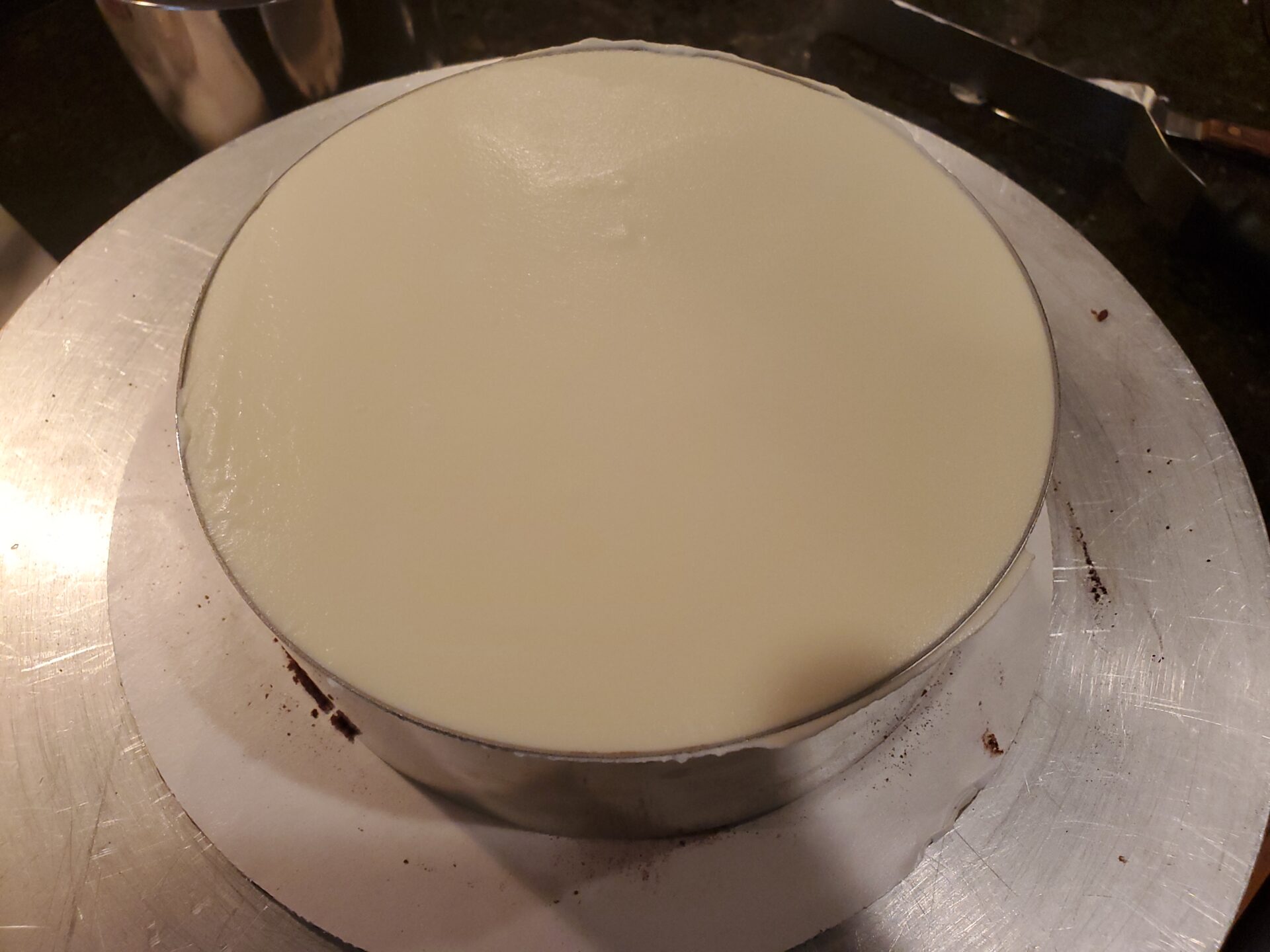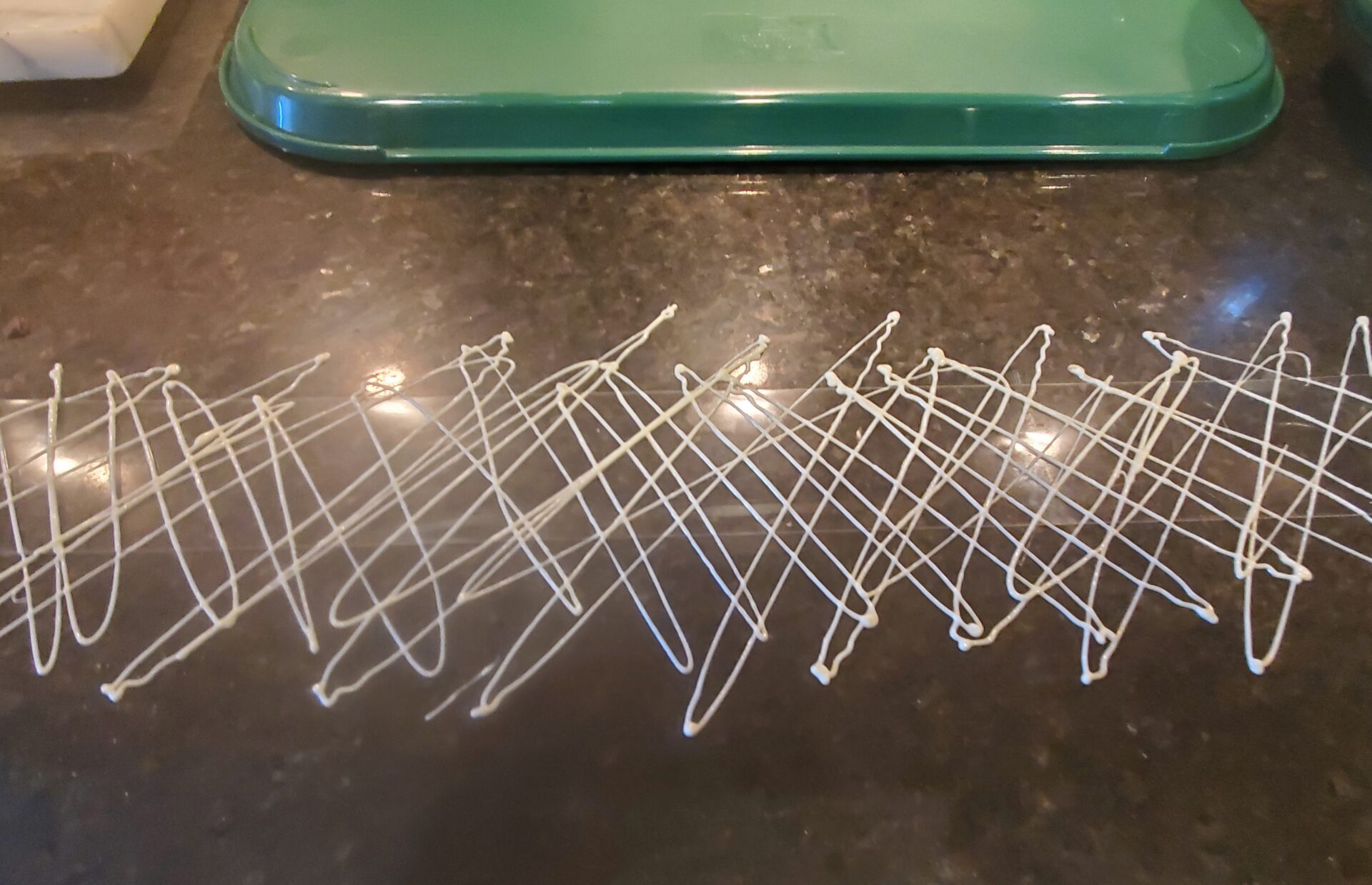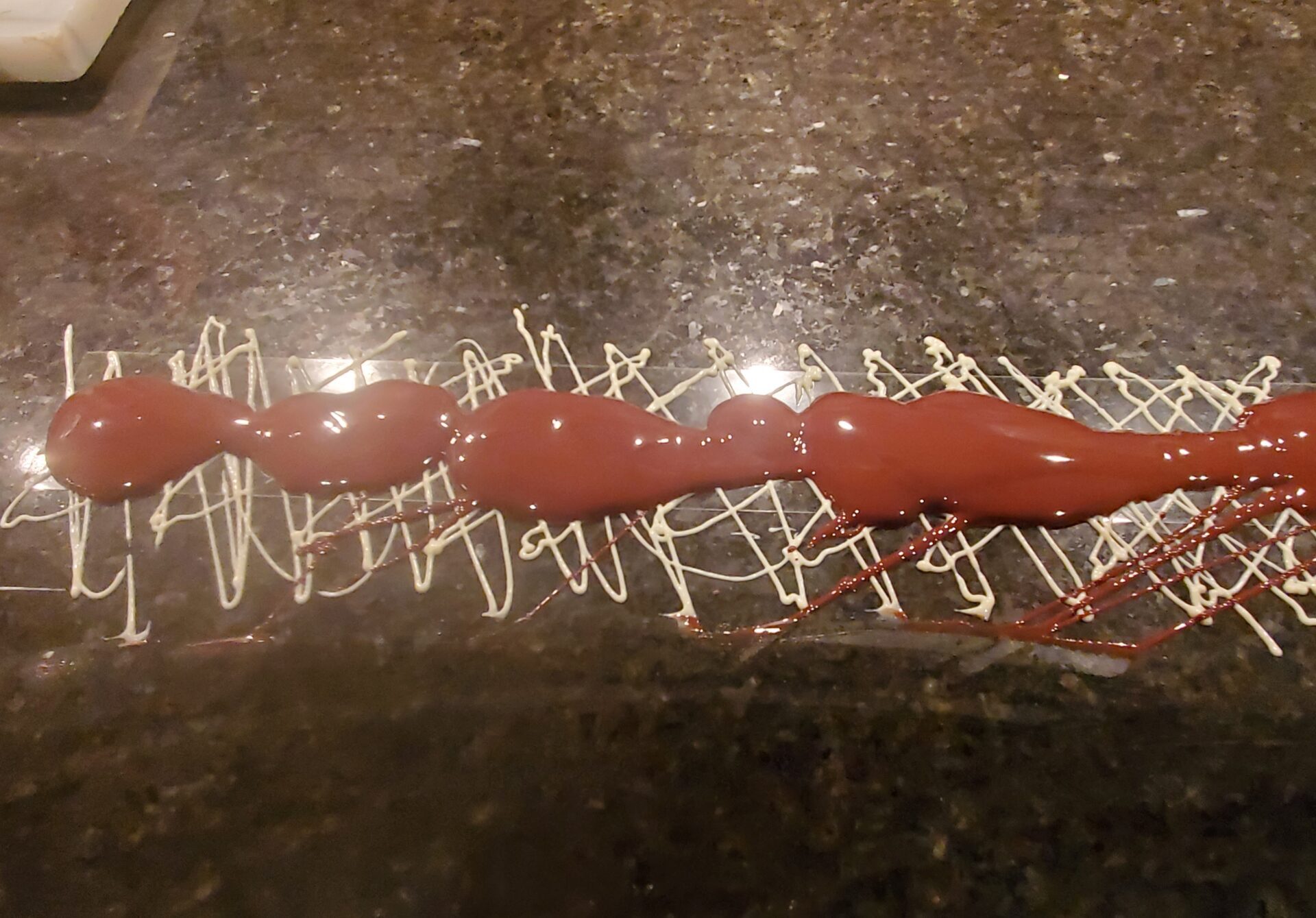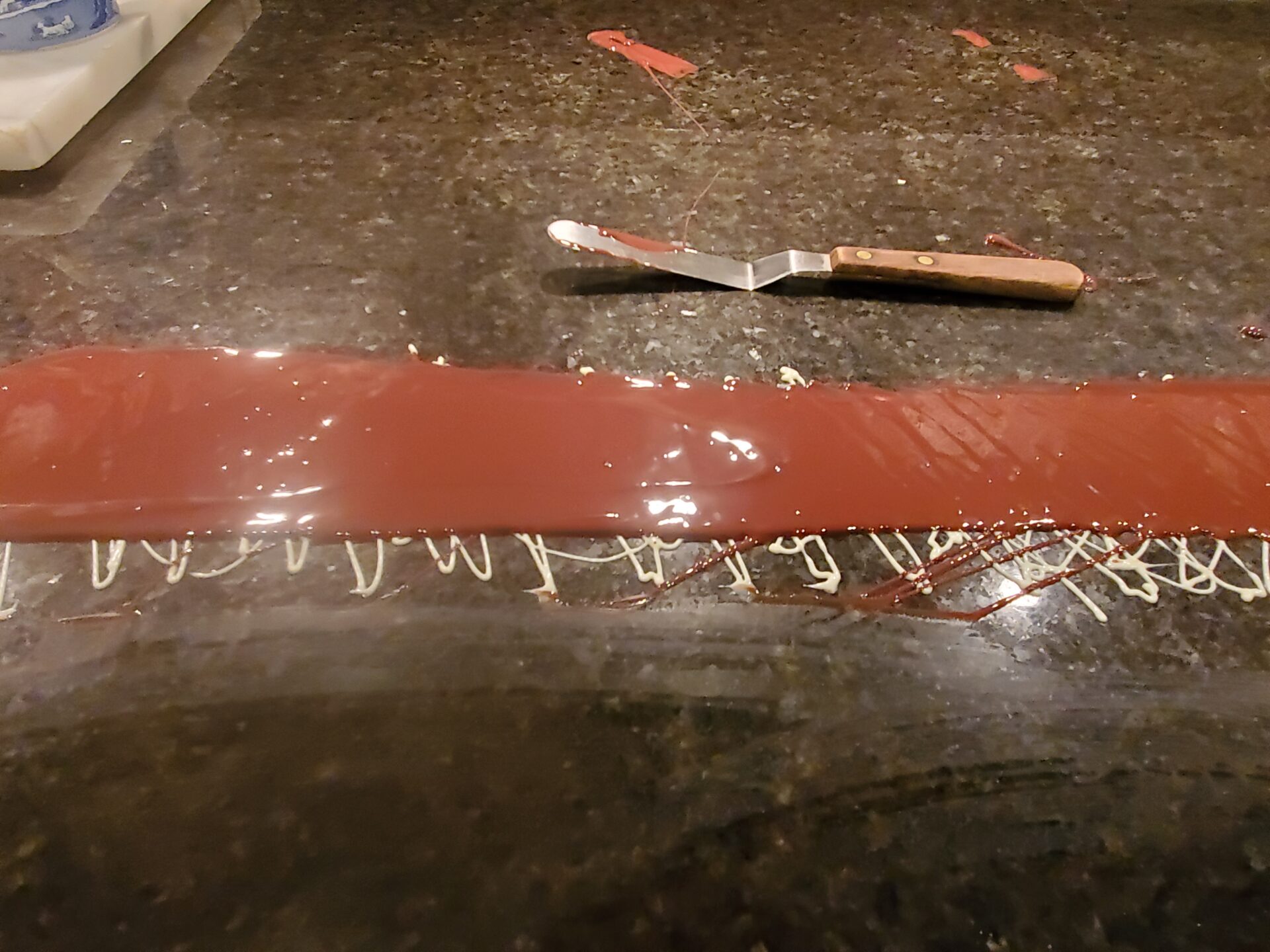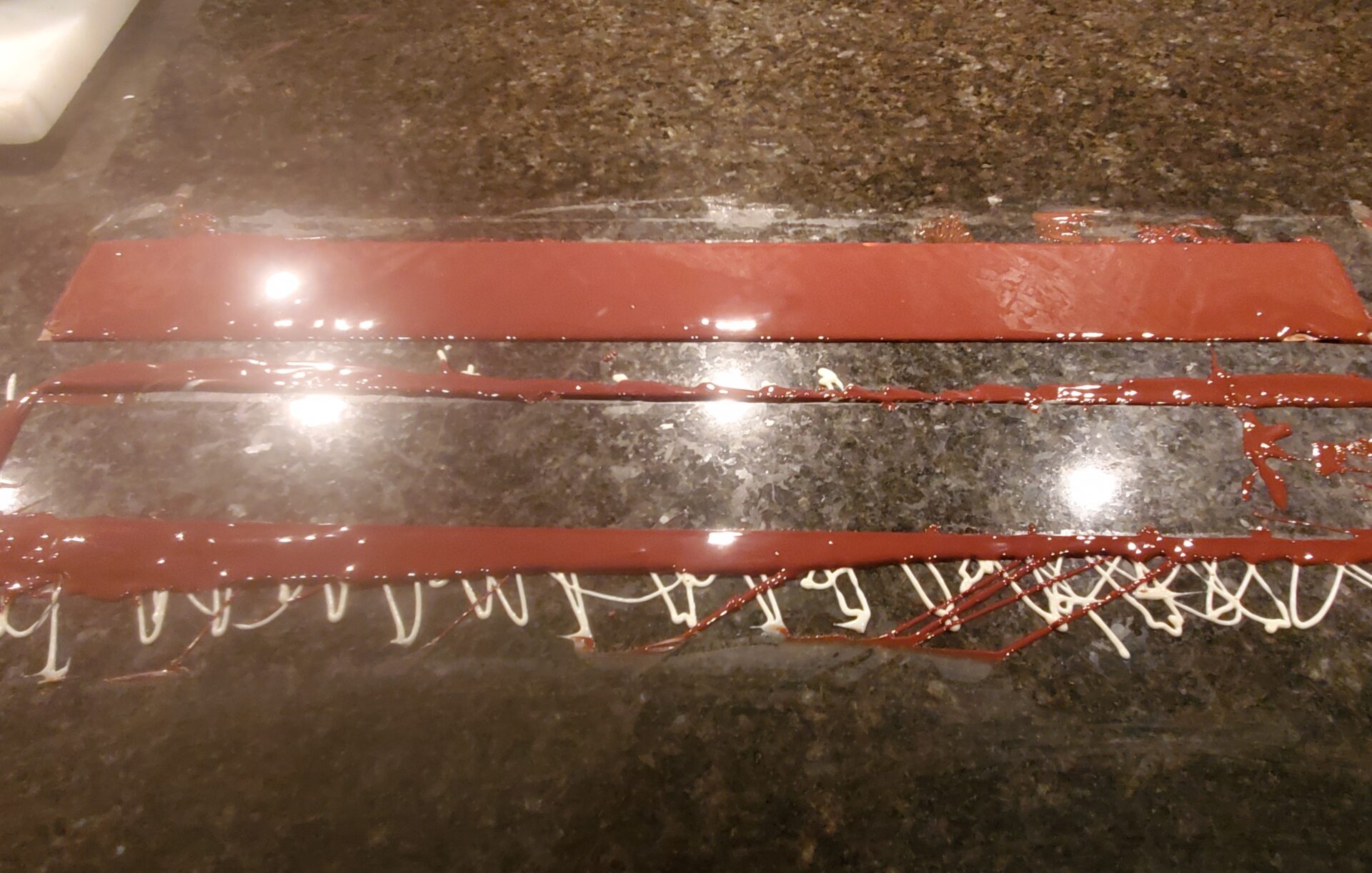Ivoire et Chocolat
This wonderful cake came to life as I was working on a chocolate roulade based on the delicious and versatile flourless chocolate souffl© sheet, from Paula Peck’s The Art of Fine Baking. The roulade is not a thing of beauty (it tends to crack) but the flavor contrast of the dark chocolate cake and the whipped cream filling is excellent.
As I was eating yet one more slice, I started thinking about a dessert that combined the souffl© sheet with a filling similar to whipped cream, but with more body. The white chocolate mousse I used in Seven Layers, my Martha’s Vineyard pastry shop, came to mind as a possibility.
The mousse was inspired by the one used at Patisserie Lanciani for their G¢teau Charlene Blanche, once featured on a cover of Chocolatier magazine. For several years, Patisserie Lanciani on West 4th street in Greenwich Village was one of New York’s premier pastry shops with a bustling caf© and a large wholesale business. My two winters spent working there provided invaluable lessons.
I, like many people, find white chocolate by itself a bit sweet and not that appealing. But white chocolate mousse, when made from high quality white chocolate and a good recipe, is a velvety and sublime creation.
The Seven Layers recipe consists of a base made from white chocolate and heavy cream, which is added to barely whipped cream, and then whipped a bit more, until just firm. I have made this recipe numerous times and it is still a joy when the mixer is stopped at just the right stage, and I see and taste the satiny mousse in the bowl.
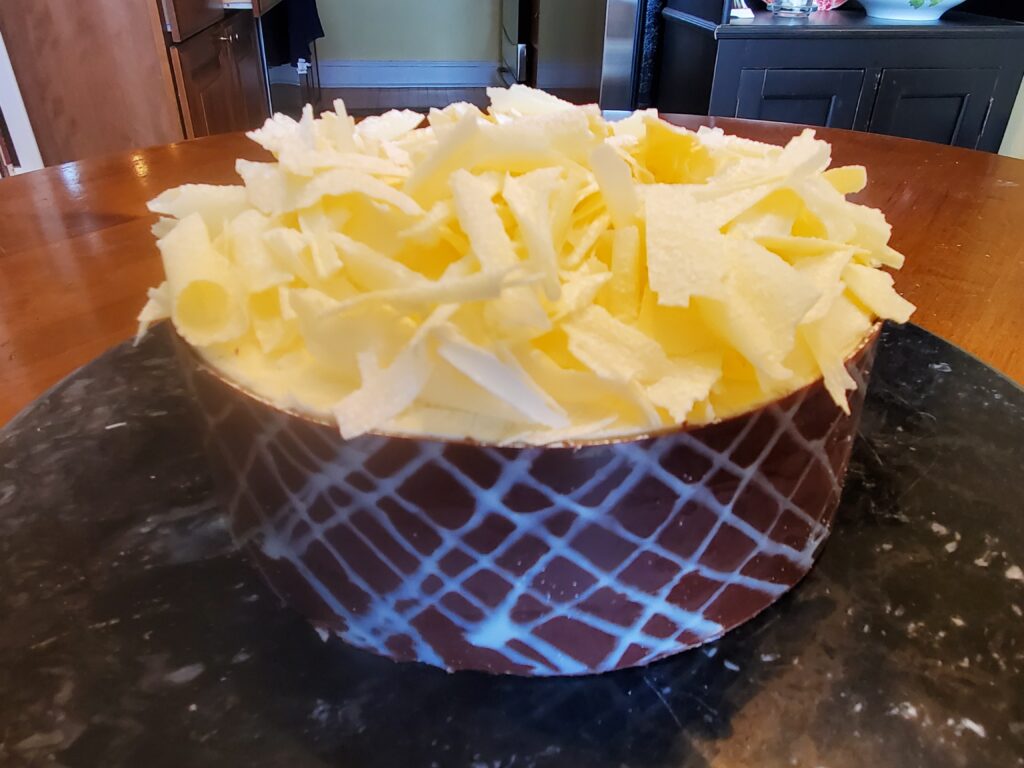
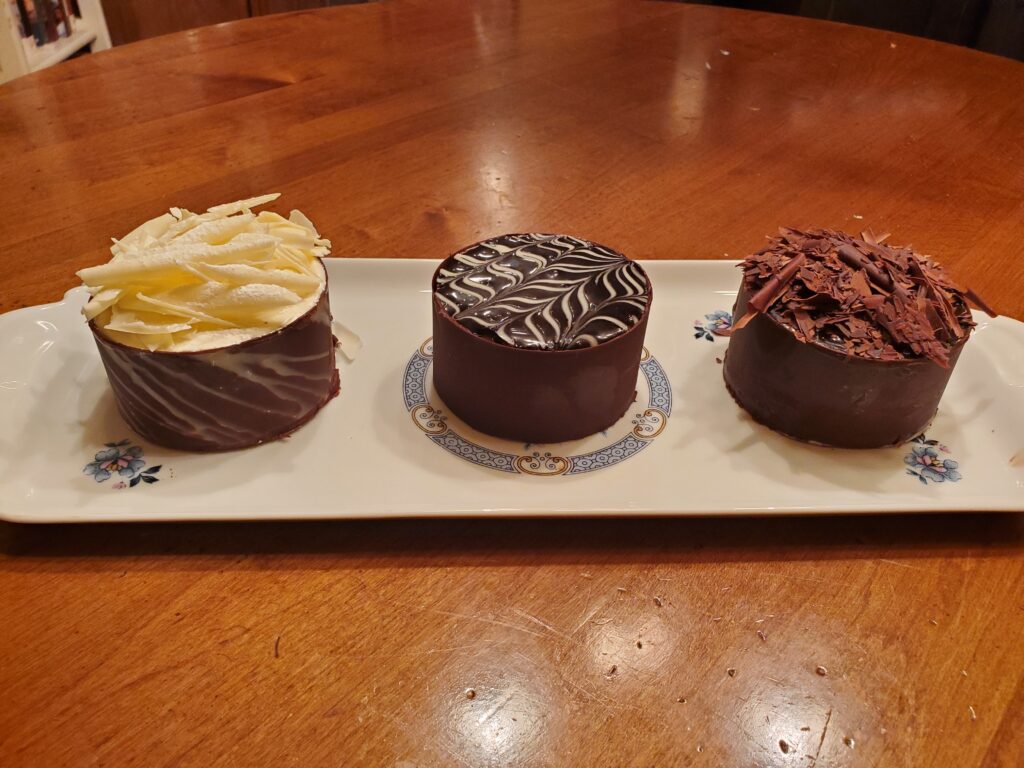
In addition to careful whipping, the flavor and texture depend on the white chocolate. I use Ivoire (hence the cake’s name) from Valrhona which is less sweet and provides a smoother body than other brands. A source for Ivoire is provided at the bottom of the recipe.
To break the overall assembly into steps, bake the chocolate souffl© sheet up to two weeks prior, cut out the two 6″ circles and freeze.
The finishing of the cake may be varied for appearance and simplicity. White chocolate shavings may be substituted for the dark on top and dark shavings may be use instead of the chocolate band.
This has been among my most gratifying creations. It became an instant favorite among everyone who sampled it and employs methods learned at various stops in my New York pastry career.
Ivoire et Chocolat
| Yield: 1 6-inch cake | # of Servings: 6 to 8 |
White Chocolate Mousse Base:
1 cup (8 fl oz) heavy cream
5.6 oz (159 g) Valrhona Ivoire white chocolate
White Chocolate Mousse:
1 cup (8 fl oz) heavy cream
1 ½ cup (12.65 oz / 359 g) white chocolate mousse base (from above)
Chocolate Shavings:
1 lb semi or bittersweet chocolate bar2
Optional: Chocolate Band:
7 oz (198 g) chocolate, 55% to 61%, chopped fine
1 ¾ oz (50 g) white chocolate, wafers or a bar broken up
Tools and equipment needed:
- 10 ¼” by 15 ¼” jelly roll pan
- 6″ by 2″ stainless steel cake ring
- Small saucepan
- Small butane torch
- Cake turntable
- Handheld or countertop mixer with whisk attachment
- Scale, liquid measuring cups
- Mixing bowl, plastic spatula, whisk, offset spatulas (large and small)
- 6″ cardboard circles (2)
Optional tools:
- Acetate strip (cake collar): 2″ (50 mm) wide by 19″ length
- Plastic pastry bag
- Plain ½” pastry tip (Ateco #808)
Directions:
Day 1 – Make the white chocolate mousse base:
- In small saucepan, bring the heavy cream just to the simmer. Remove from the heat.
- Add the Ivoire white chocolate pieces (feves) all at once. Cover and let sit for 3 minutes.
- Stir gently with a whisk until the white chocolate is totally melted.
- Strain through a fine mesh strainer into a clean bowl.
- Place plastic film directly against the white chocolate cream (prevents a crust) and poke several holes with the tip of a paring knife.
- Refrigerate overnight or for up to 3 days.
Day 2: Baking chocolate sheet, cutting 6″ circles, making white chocolate mousse:
- Bake the Chocolate Souffl© Sheet, let cool.
- Lightly dust the top of the chocolate sheet with cocoa powder.
- Cover with a large cutting board, invert and gently knock the back of the pan to turn the sheet onto the board. Peel away the paper. Alternatively, the cake may be inverted onto a piece of parchment or a silpat on the counter.
- Using the 6″ cake ring, cut 2 circles on the sheet. If 3″ by 1.5″ rings are available, use them to cut small circles. Freeze these for another dessert or to make individual Ivoire, which are lovely. Or, save the scraps for snacking and mopping up the mousse bowl.
- Lightly dust two 6″ cardboards with cocoa (so the cakes don’t stick to the cardboard) and slide under the circles of cake. Be careful, the cakes are very fragile. These layers may be wrapped in plastic film at this point and frozen.
- Place the cake ring over one cake circle, and set on a flat plate, or a larger cake circle. This will be the bottom of the finished cake.
- Set this and the other cake circle aside.
White chocolate mousse and cake assembly:
- Place mixing bowl and wire whip in refrigerator.
- With chilled bowl and whip, beat the heavy cream until it just starts to thicken.
- With machine on low speed, pour in the mousse base. Stop machine and scrape sides and bottom of bowl with plastic spatula.
- Whip the mousse on medium speed just until it thickens and holds its shape, about 50 seconds.
- Using a pastry bag with a plain round tip, pipe mousse on the bottom cake layer, filling about â…” of the ring. Alternatively, the mousse may be spooned into the ring, and spread with offset spatula.
- Lift the cardboard circle with the 2nd cake layer and slide it onto the mousse.
- Pipe mousse over the 2nd layer, and level to the edge of the ring with a long spatula.
- Refrigerate for at least 6 hours, or preferably overnight.
Day 3: Finishing with chocolate band and shavings
- Melt white chocolate. Pour into a small parchment cone, set aside in a warm place.
- Temper the dark chocolate by putting ¾ of the chocolate (5 ¼ oz) either over a double boiler or in a microwave until mostly melted. You should still see some partially unmelted pieces of chocolate.
- Add the remaining chocolate and stir to melt, heating in brief intervals to complete the melting.
- Lay the acetate strip on a clean counter.
- Pipe any zig-zag pattern of white chocolate (using your inner Jackson Pollack) over the acetate strip.
- Using a ¼ cup measure, pour dark chocolate over the white and spread with a small offset spatula.
- Let set for 2 minutes then lift the strip by placing a paring knife under one corner. Move the strip to a clean counter or the back of a long baking pan.
- Remove the cake from the refrigerator and place on turntable or counter. Using butane torch, heat the outside of the ring, enough to lift the ring off the cake.
- Once the chocolate strip has begun to harden, but is still flexible, wrap it around the cake, pushing gently to adhere.
- Refrigerate cake for 15 minutes.
- Remove cake from refrigerator and pull the acetate strip from the chocolate.
- Two methods for chocolate shavings:
- Place chocolate bar on a plate, and microwave for a few seconds to soften. Holding bar in your hands, use a vegetable peeler to peel off curls from the edge of the chocolate bar.
- Lay the chocolate bar on the counter, and carefully run a chef’s knife at a 45 ° angle toward you. Lift the shavings to a clean dish. Note: be extremely careful with the knife while doing this.
- Lay shavings on top of the cake and lightly dust with confectioners’ sugar.
- Cake may be kept in the refrigerator for up to 3 days.
Ingredient Sources:
- Valrhona Ivoire and 50 mm (2″) Acetate Roll are available from L’Epicerie https://www.lepicerie.com
- Large 500g dark chocolate bars (for shavings) are available from Trader Joe’s
